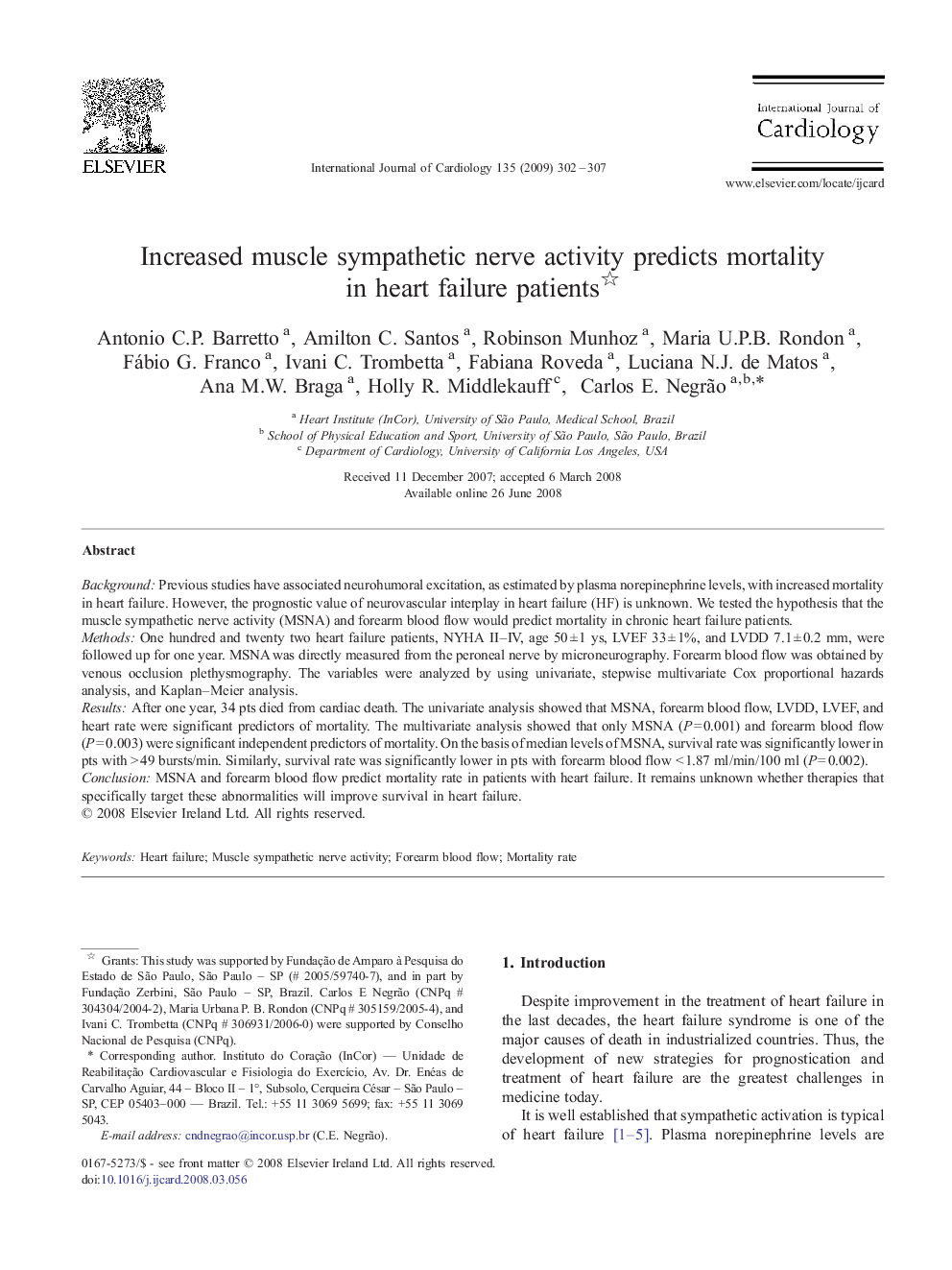| Article ID | Journal | Published Year | Pages | File Type |
|---|---|---|---|---|
| 2932429 | International Journal of Cardiology | 2009 | 6 Pages |
BackgroundPrevious studies have associated neurohumoral excitation, as estimated by plasma norepinephrine levels, with increased mortality in heart failure. However, the prognostic value of neurovascular interplay in heart failure (HF) is unknown. We tested the hypothesis that the muscle sympathetic nerve activity (MSNA) and forearm blood flow would predict mortality in chronic heart failure patients.MethodsOne hundred and twenty two heart failure patients, NYHA II–IV, age 50 ± 1 ys, LVEF 33 ± 1%, and LVDD 7.1 ± 0.2 mm, were followed up for one year. MSNA was directly measured from the peroneal nerve by microneurography. Forearm blood flow was obtained by venous occlusion plethysmography. The variables were analyzed by using univariate, stepwise multivariate Cox proportional hazards analysis, and Kaplan–Meier analysis.ResultsAfter one year, 34 pts died from cardiac death. The univariate analysis showed that MSNA, forearm blood flow, LVDD, LVEF, and heart rate were significant predictors of mortality. The multivariate analysis showed that only MSNA (P = 0.001) and forearm blood flow (P = 0.003) were significant independent predictors of mortality. On the basis of median levels of MSNA, survival rate was significantly lower in pts with > 49 bursts/min. Similarly, survival rate was significantly lower in pts with forearm blood flow < 1.87 ml/min/100 ml (P = 0.002).ConclusionMSNA and forearm blood flow predict mortality rate in patients with heart failure. It remains unknown whether therapies that specifically target these abnormalities will improve survival in heart failure.
